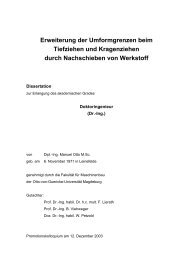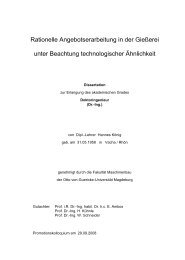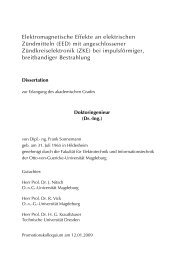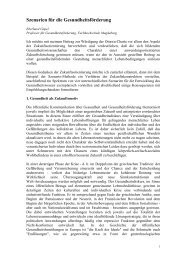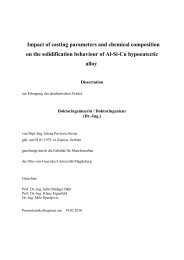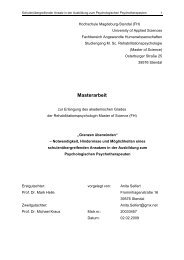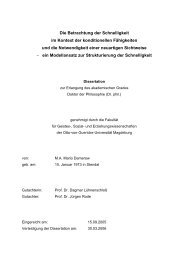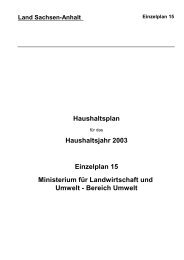Chapter 1
Chapter 1
Chapter 1
You also want an ePaper? Increase the reach of your titles
YUMPU automatically turns print PDFs into web optimized ePapers that Google loves.
as a whole, but the related transition costs will be higher for progress in both resource reallocation and closer integration<br />
some groups than for others. Lessons from the political between the production and investment patterns of the two<br />
economy of reform around the world show that interest parties. Several East European countries are moving quite<br />
groups hurt by policies designed to increase competition rapidly (within five to seven years) to remove their trade bar-<br />
(for example, public enterprises, heavily protected private riers against EU products and seek closer integration and<br />
enterprises, traders with import monopolies) will exert an wider access for their goods and services in the EU market.<br />
increasing pressure on the government to delay and even The Tunisian trade agreement with the EU is more gradual.<br />
stop the reforms. Reversals can be extremely costly in terms For products that are sensitive to Tunisian producers, some<br />
of the government's credibility and the public's expectation tariff reductions wiDl be introduced very slowly over twelve<br />
that improvements in the standard of living will actually years and for other products, reductions will be postponed<br />
materialize. for four more years and then introduced gradually over eight<br />
As an illustration, consider the following simple exercise. years, thereby extending substantial protection for many<br />
Assuming that the average per capita GDP growth rate in domestic producers. The agreement also provides ample<br />
the last five years, around 2.4 percent, remains in the future, provisions (safeguard mechanisms in conformity with<br />
it will take sixty-six years for Tunisia to reach the per capita GATT regulations) enabling domestic producers to reverse<br />
GDP level of France in 1994. However, if because of an the tariff reduction process. Discussions on improved access<br />
acceleration of the pace of reforms, the per capita GDP in the EU market for services and agricultural products has<br />
growth rate rises to 4.5 percent in the medium term (say, in been postponed for at least four years (although the access<br />
five years) after having decreased (by, for example, 1 per- for some agricultural products has been increased). These<br />
centage point) due to transition and implementation costs, features could increase the likelihood of reversals, which<br />
it will take thirty-nine years for Tunisia to reach the same slow down the reallocation of resources and delay the econobjective.<br />
omy's ability to reap the benefits of reform. Reversals could<br />
also undermine the credibility of Tunisia's gradual reform<br />
Decisive trade and investment liberalization strategy.<br />
Tunisian authorities should (1) consider compressing<br />
The process of achieving international competitiveness is an the tariff reduction schedule from twelve years to at most<br />
effect of trade liberalization and not a prerequisite for it. The eight years, (2) begin lowering tariffs on all manufactured<br />
argument for protection as a means of helping enterprises goods in the first year (1996), and (3) apply reductions to<br />
upgrade their products has been discredited by international all its trade partners. By making a clear schedule of trade<br />
experience, and there is no reason to believe it is any differ- reform well-known to key groups (labor unions, the acadeent<br />
in Tunisia. The report argues strongly that the best way mic and business communities) and by adhering to the diffor<br />
Tunisia to respond to the challenges and reap the bene- ferent reform schedules, the government will demonstrate<br />
fits of globalization is by liberalizing trade rapidly and deci- its strong, irreversible political commitment to<br />
sively and by significantly reducing impediments to foreign<br />
investment. One of the primary objectives of trade liberal-<br />
competition.<br />
ization is to use competition and efficient resource allocation<br />
as an engine of growth. Increased openness to international<br />
Refocusing the role of the state<br />
trade and foreign investment promotes domestic competi- Privatization, including the dismantling of government<br />
tion, enhances the marginal product of capital, and speeds up monopolies, is central to the structural reform of the econgrowth.<br />
International competition and liberalization of omy and to the process of refocusing the role of the state in<br />
investment regulations will promote cooperation between the economy. Ownership does matter, because it determines<br />
Tunisian and foreign companies that will encourage the tech- the incentive structure of the enterprise, which, in turn, is<br />
nological upgrading of Tunisian industries and the realloca- the force that promotes productivity in a competitive envition<br />
of resources to more productive activities. ronment. The deregulation of public sector monopolies is<br />
The free trade agreement with the EU is a major step, also critical to increasing competition and improving probut<br />
in order to succeed, the agreement needs to show rapid ductivity. In the cases where these measures were under-<br />
52 TUNIsIA's GLOBAL INTEGRAnON AND SUSTAINABLE DEVELOPMENT STRATEGIC CHOICES FOR THE 21ST CENTURY




